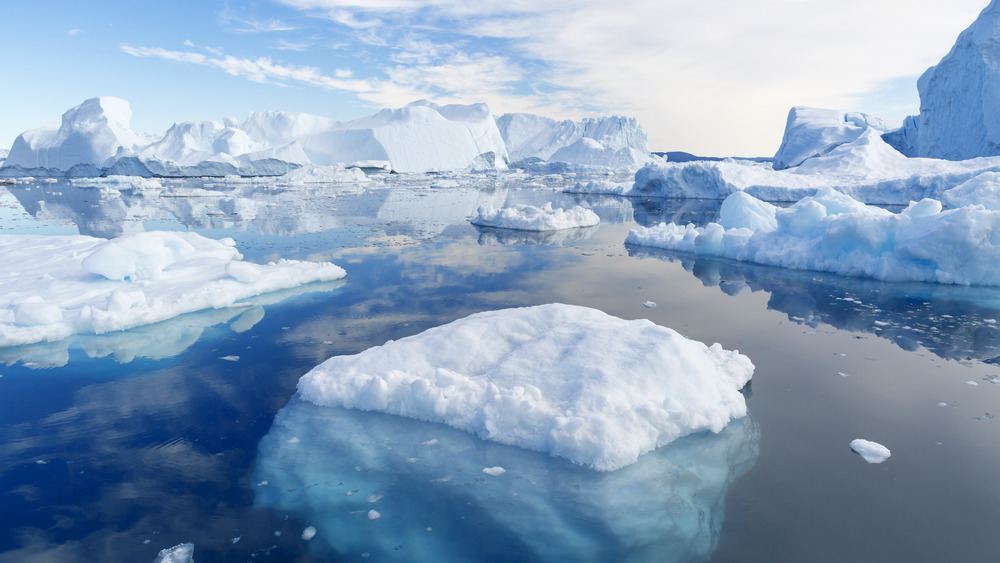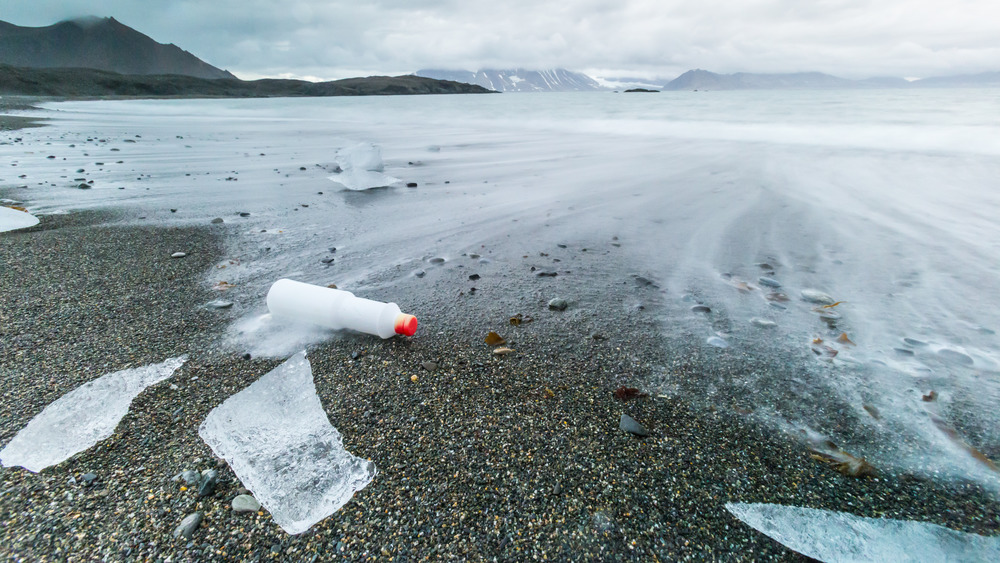The Truth About The Pollution At The North Pole
It's easy to think of the North Pole as some sort of magical, pristine land free from any trash or pollution, what with the blindingly white and stark landscape photography, the lack of human inhabitants, and its mythical status as the home to Santa Claus and his toy factory. The truth is that no place on Earth seems safe from pollution at this point, and the North Pole is particularly vulnerable for a few specific reasons.
In 2019, after a trip to the Arctic with researcher and ecotoxicologist Ingrid Hallanger, National Geographic reported that the region actually contains more plastic debris than most places on the planet. Specifically, "higher concentrations of microplastics in sea ice in these remote, high-latitude hotspots than in the five infamous ocean garbage patches." Per the National Ocean Service, microplastics are small pieces of plastic that measure less than five millimeters long and contribute to plastic's status as the most common type of marine debris found in the ocean.
As reported by scientists from the Alfred Wegener Institute of the Helmholtz Center for Polar and Marine Research in Bremerhaven, Germany in 2018, there has been a "20-fold increase in marine litter in the Arctic over the course of a decade" and "95 percent of the plastic load in the Arctic Ocean is found in the northeastern Atlantic sector of the Arctic Ocean." Hallanger noted for National Geographic that the Arctic is especially vulnerable to the effects of plastic pollution, in conditions that are already exceedingly harsh.
Microplastics are everywhere
Animals in the Arctic are already affected by harsh conditions, the lack of readily available food, and the impact of climate changes on formerly familiar environments. Hallanger has studied the impacts of microplastics on Arctic wildlife, and says, "This could be the one thing that puts them over the edge."
Why is the concentration of plastics especially high in the Arctic? In 2017, The Guardian reported on a British-led expedition in which scientists from the United Kingdom, the United States, Norway, and Hong Kong discovered blocks of polystyrene "many hundreds of miles from land in areas that were, until recently, covered by ice all year round." The conclusion is that climate change is making plastic flow into the Arctic as ice melts, and also releasing plastic into the water that has been trapped within ice for years. National Geographic further reported that according to Erik van Sebille, an oceanographer with Utrecht University in the Netherlands, plastics pile up at the southern edge of the Arctic Ocean due to northbound Atlantic water cooling and sinking there, setting into motion a powerful ocean current system. Because plastic is buoyant, it stays behind — hence the pile-up.
Van Sebille and his colleagues have further discovered that subsurface currents move plastics to both of the globe's poles, meaning plastic is building up in both the Arctic and the Antarctic. Apparently, a land mass doesn't have to be full of humans to be affected by the sheer enormity of trash we produce.

